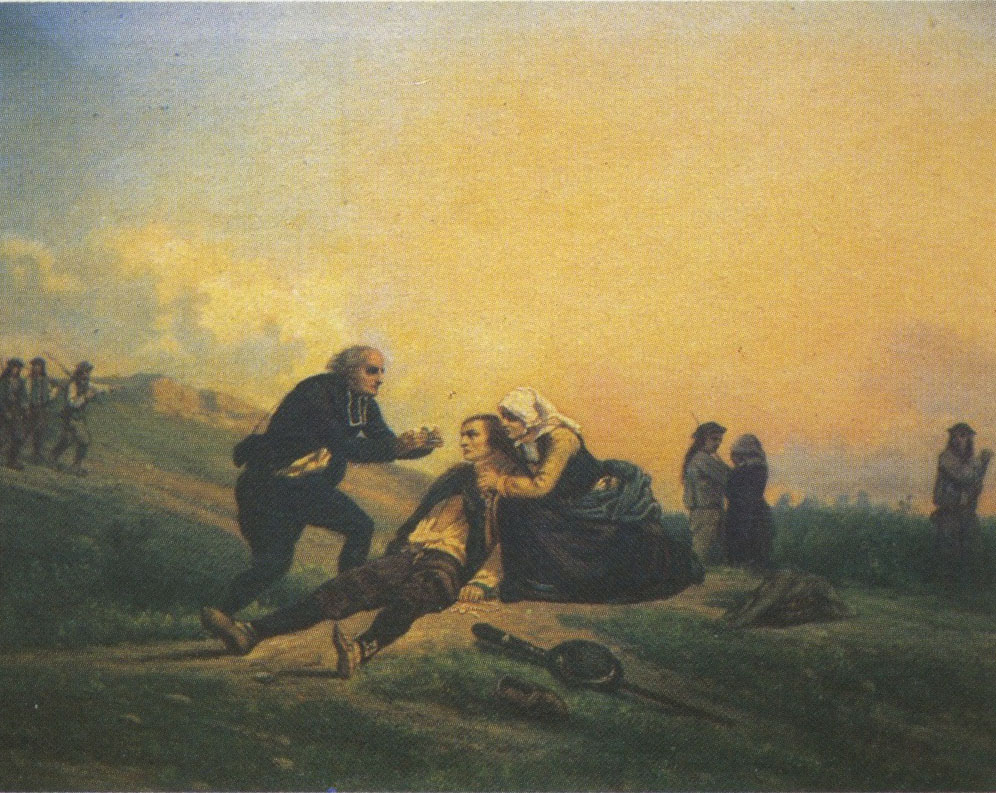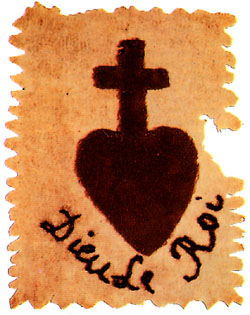
Republican General François-Joseph Westermann (1751-1794), the "butcher of Vendée"
The battle commenced towards midnight. Thanks to Larochejacquelein’s activity, the Catholic forces were all under arms; for Westermann had counted on surprising them, and there would have ensued the same dark scene of slaughter in which he had exulted at Châtillon. But it was a terrible night, nevertheless; the cries of the soldiers, the roll of the drums, the gleam of the shells bursting over the town, the noise of the musketry and artillery, together with the smoke and smell of powder in the midst of the thick darkness,— these were the tokens of a death-struggle on which the very existence of the Vendeans depended. At length, so devoted was the courage of the insurgents, the Blues were repulsed, and Forestier with the cavalry pursued the flying columns of Westermann’s army, while Larochejacquelein drove back the advance guard on Pontonson.

La Vendée
The main street of Dol branches off into two roads; one leading to Pontonson, the other to Antrain. The Vendeans were divided into two columns, in order to guard these two approaches to the town; Larochejacquelein and Forestier in command of one, Talmont and Stofflet at the head of the other. When the brave Henri returned to Dol with shouts of victory, he found the other division of his army hotly engaged with the enemy, and giving way in all directions; even Stofflet had fled the field, and so terrified were the poor peasants, enfeebled with famine and distracted with their sufferings, that they ran away, trampling on the wounded, and deaf to the screams of their wives and children.

War of La Vendée Painting by Jules Girardet
However, the chiefs attempted to rally the fugitives; D’Autichamps harangued, and Marigny sabred them; some of the women, among whom were the noble widow of Bonchamps and Madame de Lescure’s mother, rushed into the midst of the battle and exhorted the soldiers to do their duty…. That intrepid young chief [Larochejacquelein] fought with the courage of a lion while there was a man to stand by his side; and when all had fled, disdaining to turn his back, he crossed his arms upon his breast, and stood calmly facing a battery. While in that attitude, he learned that the battle was still raging in another quarter.

Jean-Nicolas Stofflet
Talmont, with eight hundred men, chiefly belonging to Little Vendée, was fighting hand to hand with the republicans, and thus had prevented the enemy from turning to advantage the panic of the Vendeans. He hurried away in the direction indicated; and with that handful of brave men the two commanders kept the enemy at bay till the curé of St. Marie-de-Rhé arrived with his two thousand followers. Stofflet, recovering his presence of mind, had also returned to the town in time to take part in the renewed struggle. This unexpected reinforcement decided the day; the Blues soon gave way, and the Vendeans remained masters of the town. The cure, who had stood in the thickest of the fight, with his crucifix reared high in the air, returned to Dol, chanting the Vexilla Regis. But on the 21st the battle was renewed, when the Blues were again routed; and the insurgents entered Antrain, after defeating a regiment of the line. By this series of gallant victories they found themselves again masters of their own movements.
George J. Hill, The Story of the War in La Vendée and the Little Chouannerie (New York: D. & J. Sadlier & Co. n.d.), pp. 94-95.
Short Stories on Honor, Chivalry, and the World of Nobility—no. 40









